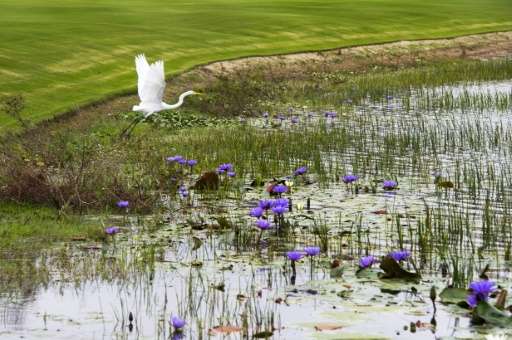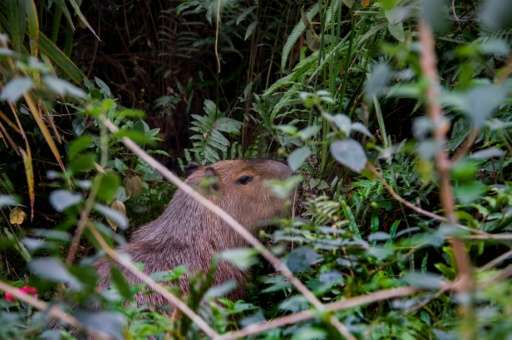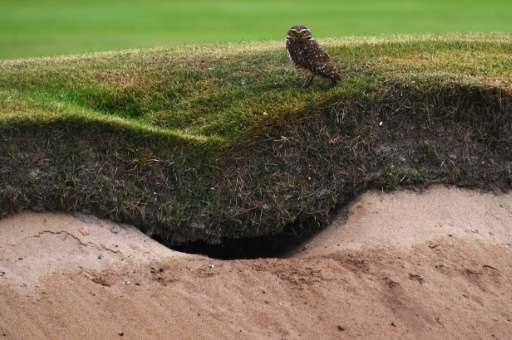Crocs, rodents, sloths add spice to Rio golf traps

If Zika-spreading mosquitos sound like the deadliest bite at Rio, look out for the crocodile-like caimans on the Olympic golf course.
Beware also of the capybaras rodents, monkeys, three-toed sloths, burrowing owls and the occasional boa constrictor.
Rio is famous for wild life at Carnival time, but real wildlife will bare its teeth during the 72-hole men's and women's tournaments over the next two weeks.
PGA Tour players have faced crocodiles on courses before in Florida.
But in Rio, there are signs to warn spectators and players to be cautious around the wild animals roaming the Olympic course, not the least of which are the caimans, the crocodile cousins who are well-known predators on South American lakes and streams.
Mark Johnson, the PGA Tour director of international agronomy and top greenskeeper at the Olympic course, is not too worried about the caiman living in the lakes near holes two, three, five and nine.
They usually come out at night and are relatively timid, by Johnson's Florida standards.
"They are maximum five feet (1.5m). Jeez, I have 10- to 12-foot alligators in my backyard," Johnson said.
Animal handlers will be on hand to deal with any species who decide to roam into the mix with some of the world's top golfers and the following spectators. Any beast that is caught will be relocated into a nearby the national park area.

The Gil Hanse-designed Olympic golf venue was created from the swampy Marapendi Lagoon, on ground where a sand-mining operation had degraded the landscape.
An estimated 263 animal species are in the area now, compared to 118 before the course was built. Native vegetation is up 167 percent, as chemicals could not be used to kill unwanted weeds or insects.
Dog like rodent
But water hazards could have a whole new meaning if a caiman comes wandering out of one at a crucial moment.
As International Golf Federation executive director Anthony Scanlon said years ago, "I don't think we're going to get a bite. We're not playing at night."
In fact, for the Olympic groundskeepers, the more daunting animals are the capybaras, the world's largest rodents.
The dog-sized creatures (two feet/60cm and 68kg/150 pounds) will nibble on the grass so meticulously trimmed for golf and plod through sand traps as if they owned the place.

"They chew down on the grass at night," Johnson said. "There are about 30 to 40 of them inside the course perimeter, but they live here. We play golf here. We co-exist."
A variety of snakes include a few boa constrictors while the birds include sandpipers, vultures and egrets. Monkeys live in cashew trees near the 12th green.
Burrowing owls have taken the home development along the golf course idea to the ultimate level. One group are between the 11th and 12th holes, in a waste area where cactus plants bloom and another have dug out a big nest in a bunker left of the ninth green.
"I reckon they have been in 80 percent of the bunkers," Johnson said. "The sod at the top is perfect for them. I'm not a biologist by any means but these owls routinely have excessive amounts of babies. There is something they like here."
The Rules of Golf offer relief from burrowing animals, although the thinking was more about gophers than the typical eight-inch owl holes.
"We are not going to cover them up. We work around them," Johnson said. "The players won't be too upset. They will just get a free drop."
© 2016 AFP




















